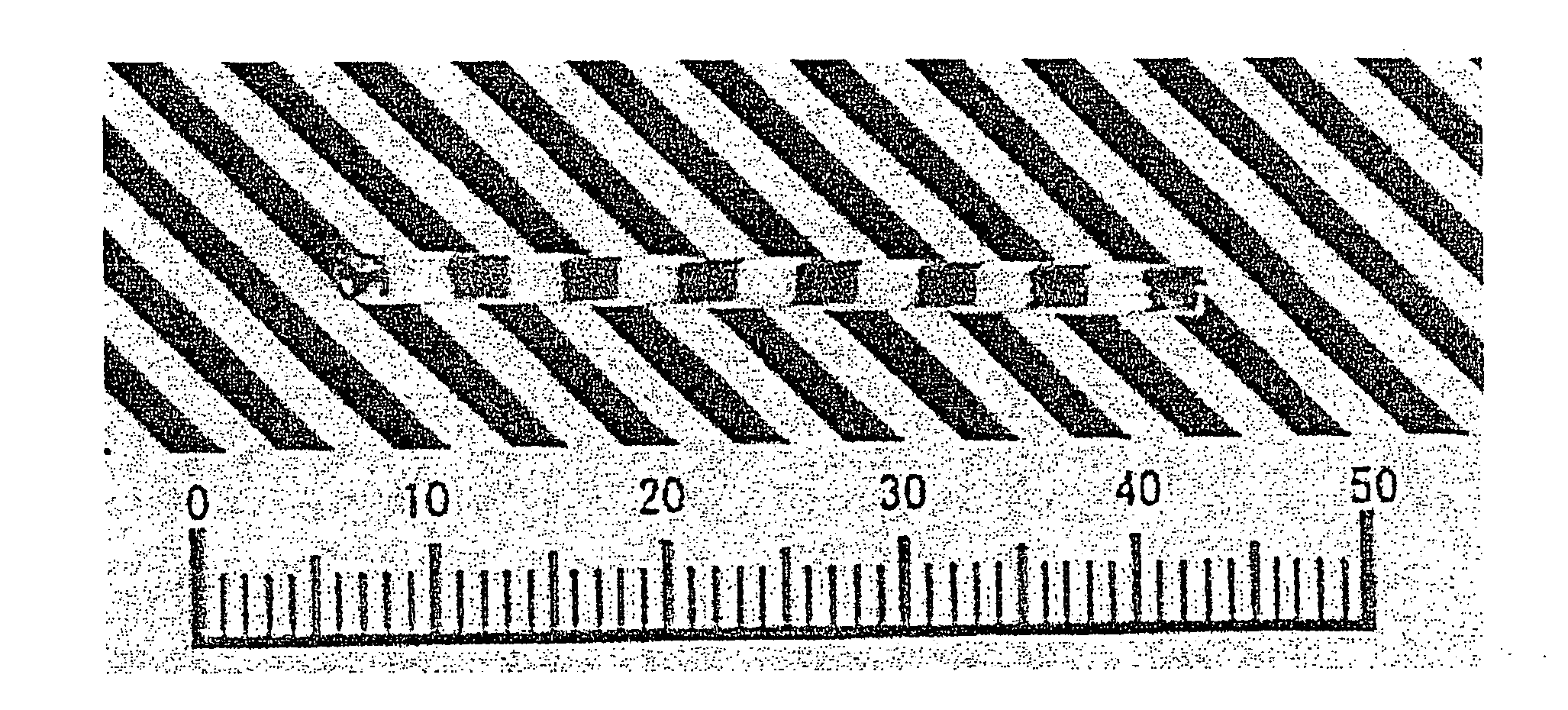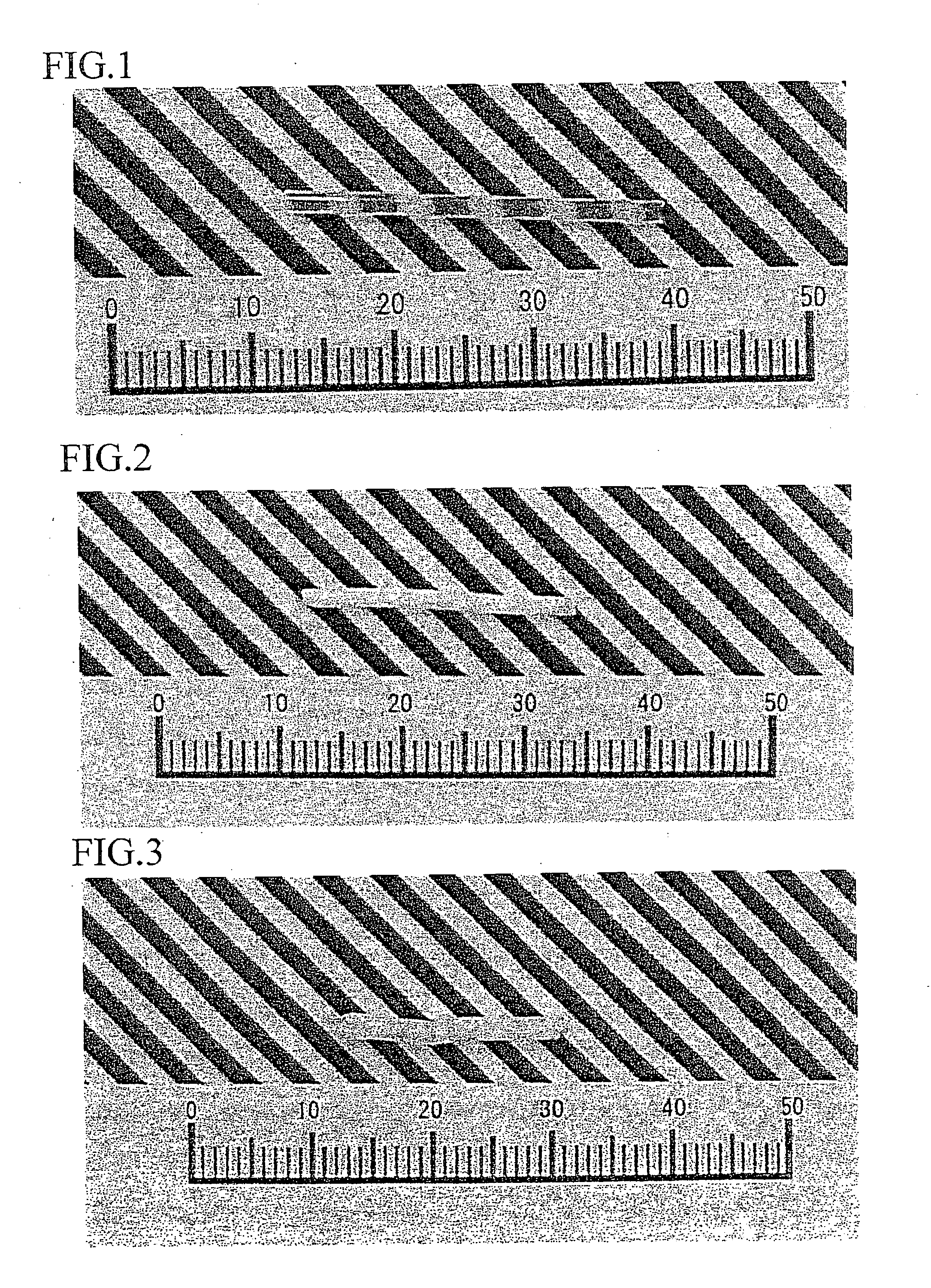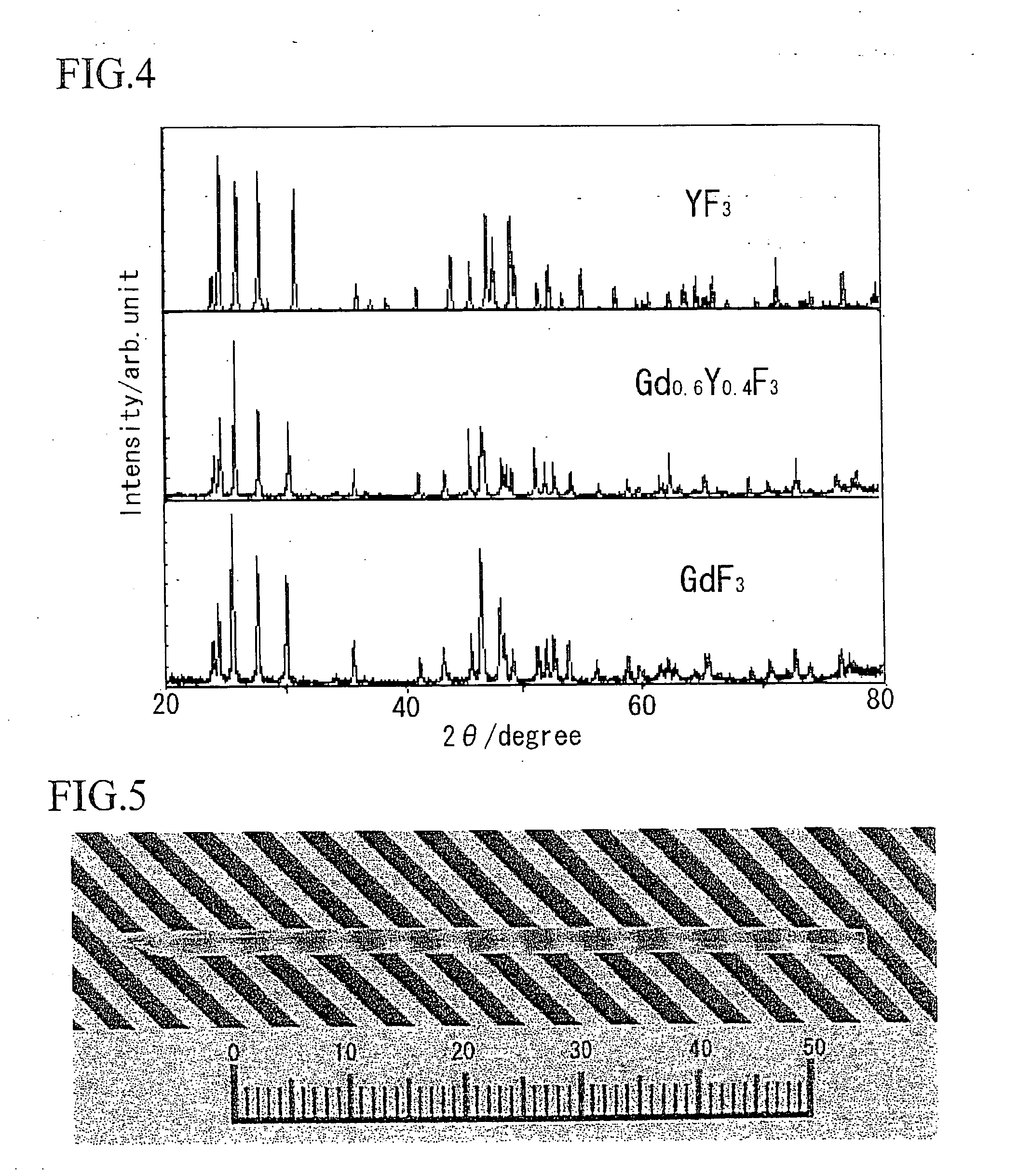Solid Solution Material Of Rare Earth Element Fluoride (Polycrystal And Single Crystal), And Method For Preparation Thereof, And Radiation Detector And Test Device
a technology of rare earth element fluoride and solid solution material, which is applied in the direction of conversion screens, instruments, and active medium materials, etc., can solve the problems of cracks in the cooling course, obstructing the development of novel single crystal materials, and luf/sub>3/sub>in itself being impossible in single crystal growth, etc., to achieve the effect of reducing the amount of cooling water, reducing the melting point, and reducing the amount of electric power
- Summary
- Abstract
- Description
- Claims
- Application Information
AI Technical Summary
Benefits of technology
Problems solved by technology
Method used
Image
Examples
examples 1 to 3
[0101] Table 1 shows fabricating conditions of (Gd1-y, Yy)F3, (Gd1-y, Yby)F3, and (Gd1-y, Luy)F3 single crystals according to Examples 1 to 3 (Nos. 1 to 3).
TABLE 1CompoundStartingOptimumNo.compositionmaterialscomposition1(Gd1−x, Yx)F3GdF3(5N)0.4 ≦ x ≦ 0.6x = 0.2, 0.4, 0.6, 0.8YF3(5N)2(Gd1−x, Ybx)F3GdF3(5N)0.2 ≦ x ≦ 0.6x = 0.2, 0.4, 0.6, 0.8YbF3(5N)3(Gd1−x, Lux)F3GdF3(5N)0.2 ≦ x ≦ 0.6x = 0.2, 0.4, 0.6, 0.8LuF3(4N)
[0102]FIG. 1 shows a photograph of a single crystal represented by (Gd1-y, Yy)F3 (x=0.4). FIG. 2 shows a crystal photograph of YF3, and FIG. 3 shows a crystal photograph of GdF3. It is understood therefrom that although YF3 and GdF3 each exhibit phase transition to thereby lead to cloudy polycrystals, there can be obtained a transparent crystal from (Gd1-y, Yy)F3 (x=0.4). FIG. 4 shows powder X-ray diffraction results thereof. From the powder X-ray diffraction, it is understood that the crystal is a solid solution.
examples 4 to 10
[0103] Table 2 shows scintillation characteristics of Examples 4 to 10 (Nos. 4 to 10).
TABLE 2CompoundCeEmissionEmissionFluorescenceNo.compositionconc.wavelengthintensitylifetimeDensity4(Gd0.6, Y0.39, Ce0.01)F31%300 nm7020 ns6.26 g / cm35(Gd0.6, Y0.37, Ce0.03)F33%300 nm11021 ns6.26 g / cm36(Gd0.6, Y0.35, Ce0.05)F35%300 nm8020 ns6.26 g / cm37(Gd0.67, Lu0.3, Ce0.03)F33%300 nm20020 ns7.43 g / cm38(Gd0.6, Y0.34, Ce0.03, Ba0.03)F33%300 nm22020 ns6.26 g / cm39(Gd0.6, Y0.34, Ce0.03, Sr0.03)F33%400 nm25025 ns6.26 g / cm310(Gd0.4, Y0.27, Lu0.3, Ce0.03)F33%300 nm18020 ns6.67 g / cm3CECeF3100% 300 nm10030 ns6.16 g / cm3
example 11
[0107] There was grown a rare earth fluoride solid solution single crystal represented by MxREyRE′1-x-yFz, (M=Sr, RE=Ce, RE′=GD) based on the micro-pulling-down method.
[0108] Photographs of obtained crystal are shown in FIG. 5 to FIG. 7, which were all colorless and transparent. FIG. 5 shows a solid solution where Gd and Y are included as RE′, and its composition is Sr0.001Ce0.02Y0.529Gd0.45F2.99. In FIG. 6, x0.001Ce0.15Gd0.78F2.93.
[0109] Meanwhile, FIG. 7 shows a crystal as a comparative example where x>0.15, and its composition is Sr0.16Ce0.01Gd0.83F2.84.
[0110]FIG. 8 shows a result where emission characteristics of Sr0.001Ce0.02Y0.529Gd0.45F2.99 and BGO were measured by radioluminescence, and FIG. 9 is an explanatory view of respective emission components in Sr0.001Ce0.02Y0.529Gd0.45F2.99. Further, FIG. 10 and FIG. 11 show results where fluorescence decay times at 380 nm and 290 nm were measured by photoluminescence, respectively.
[0111] From these results, emission near 400 nm...
PUM
| Property | Measurement | Unit |
|---|---|---|
| decay time | aaaaa | aaaaa |
| decay time | aaaaa | aaaaa |
| density | aaaaa | aaaaa |
Abstract
Description
Claims
Application Information
 Login to View More
Login to View More - R&D
- Intellectual Property
- Life Sciences
- Materials
- Tech Scout
- Unparalleled Data Quality
- Higher Quality Content
- 60% Fewer Hallucinations
Browse by: Latest US Patents, China's latest patents, Technical Efficacy Thesaurus, Application Domain, Technology Topic, Popular Technical Reports.
© 2025 PatSnap. All rights reserved.Legal|Privacy policy|Modern Slavery Act Transparency Statement|Sitemap|About US| Contact US: help@patsnap.com



